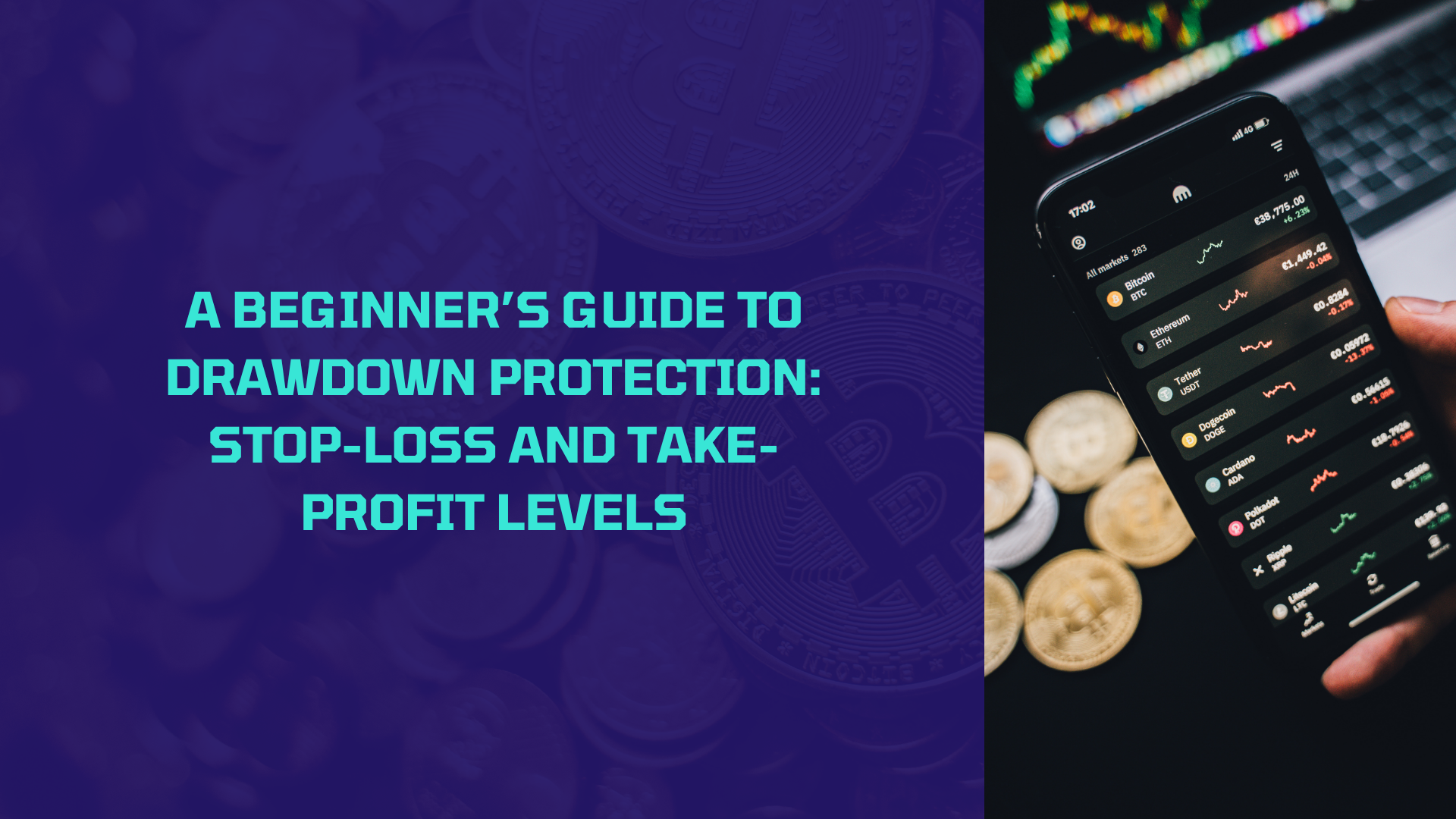
A winning strategy is worthless if one bad trade can wipe out months of gains. That’s where drawdown protection comes in. By combining well-placed stop-loss (SL) and take-profit (TP) orders, traders cap downside while systematising exits on the upside. This guide explains why both tools matter, how to calculate placements, and what common mistakes to avoid—even if you’ve never placed an advanced order before.
What Is Drawdown?
Drawdown measures the decline from a portfolio’s peak value to its subsequent trough. A 20 % drawdown means your capital fell from $10 000 to $8 000 before recovering. The deeper the drawdown, the harder it is to claw back: a 50 % loss requires a 100 % gain just to break even.
Acceptable Drawdown Thresholds
- Swing traders: aim for < 15 % peak-to-valley.
- Day traders: < 5 % daily capital erosion.
- Long-term investors: tolerate 20 – 30 % provided position sizing is small.
Stop-Loss Orders Explained
A stop-loss is an instruction to exit when price moves against you by a preset amount. According to Investopedia, SLs serve as insurance policies for your trades, removing emotion and enforcing discipline.
Types of Stop-Losses
| Type | How It Works | Best For |
| Fixed-Price Stop | Trigger at an absolute price (e.g., sell BTC at $57 500) | Highly liquid majors |
| Trailing Stop | Moves with price by X % or $X | Trend-following strategies |
| ATR-Based Stop | Uses Average True Range × multiplier | Volatile assets |
| Structure Stop | Below support / swing low | Price-action traders |
Take-Profit Orders Explained
A take-profit sets an automatic exit once your trade hits a desired gain, crystallising profits before the market reverses. CME Group’s education desk emphasises TP orders to lock in gains and adhere to risk-reward plans.
When to Use TP
- Range trading: capture predictable oscillations.
- News events: secure profit after a one-off spike.
- Algorithmic strategies: enforce quantified exits.
The Risk-Reward Ratio
Risk-reward (R:R) compares potential loss to potential gain. Successful traders rarely risk more than 1 R to make at least 1.5–3 R. BabyPips research shows systems with a 1 : 2 ratio break even at a 34 % win rate.
Formula:
R:R = (Take-Profit distance) ÷ (Stop-Loss distance)
Example: If SL is 2 % below entry and TP is 4 % above, R:R = 2. A system achieving 50 % wins now doubles capital over a long series.
Calculating Stop-Loss and Take-Profit Levels
- Determine Position Size
Risk 1 – 2 % of equity per trade. On a $5 000 account, 1 % = $50 maximum loss. - Measure Volatility
Use 14-day ATR. If BTC ATR = $1 200, and you set SL = 1 × ATR, place stop $1 200 below entry. - Define Target
Aim for R:R ≥ 1.5. With a $1 200 stop, TP should be ≥ $1 800 above entry. - Check Technical Structure
Align SL below support; move TP near resistance. Confluence boosts probability. - Place Orders
Use OCO (one-cancels-other) tickets where exchange is supported; SL and TP fire automatically.
Common Mistakes and Fixes
| Mistake | Consequence | Fix |
| Placing SL too tight | Whipsaw before trend resumes | Base SL on volatility, not fear |
| Moving SL farther | Converts small loss into big loss | Accept predefined risk; journal the urge |
| No TP in range market | Gains evaporate | Use partial scaling or fixed TP |
| Ignoring spread & slippage | Early stop or missed TP | Factor average spread + buffer |
Tools for Drawdown Control
- Position-size calculators – Free on BabyPips and Oanda.
- ATR indicators – Built into TradingView, MetaTrader.
- Smart-trade terminals – Binance Advanced, Bybit TP/SL brackets.
- Alert bots – Telegram & Discord price bots for manual traders.
Case Study: BTC/USD Swing Trade
Account size: $10 000
Risk per trade: 1 % ($100)
Entry: $58 200 after breakout confirmation
ATR (14-day): $1 000
- Stop-Loss
$1 000 below entry → $57 200 - Take-Profit
2 × ATR above entry → $60 200 (R:R = 2) - Position Size
$100 risk ÷ $1 000 distance = 0.10 BTC contract equivalent - Outcome
Price hits TP two days later; profit $200 (2 R). Drawdown capped at $100.
Advanced Adjustments
Trailing for Runners
Set a trailing stop 1× ATR behind price after the first TP to ride parabolic moves.
Break-Even Rule
Move SL to entry after +1 R gain; capital is now risk-free.
Partial Scaling
Sell half position at 1 R, move SL to break-even, let remainder chase extended targets.
Psychology & Discipline
- Pre-commit: Write SL and TP before entering trade; cognitive bias shrinks in the planning phase.
- Journal: Record rationale, emotional state, outcome. Fidelity’s 2024 study shows journaling lifts consistency by 23 %.
- Detach: View each trade as one of 100; focus on process over single outcomes.
Quick Start Checklist
- Set account-risk percentage.
- Install ATR indicator.
- Plan SL at 1 – 1.5 × ATR or below structure.
- Define TP so R:R ≥ 1.5.
- Place OCO order or manual SL/TP.
- Log trade details in a journal.
- Review weekly; tweak parameters, not emotions.
Conclusion
Stop-loss and take-profit orders are the backbone of drawdown protection. They transform gut-feel speculation into rule-based execution, preserving capital and mental bandwidth. Combine volatility-aware placements, solid R:R ratios and unemotional journaling to keep drawdowns shallow and growth steady. Adopt these practices early, and your trading career will revolve around incremental gains—not catastrophic wipe-outs.